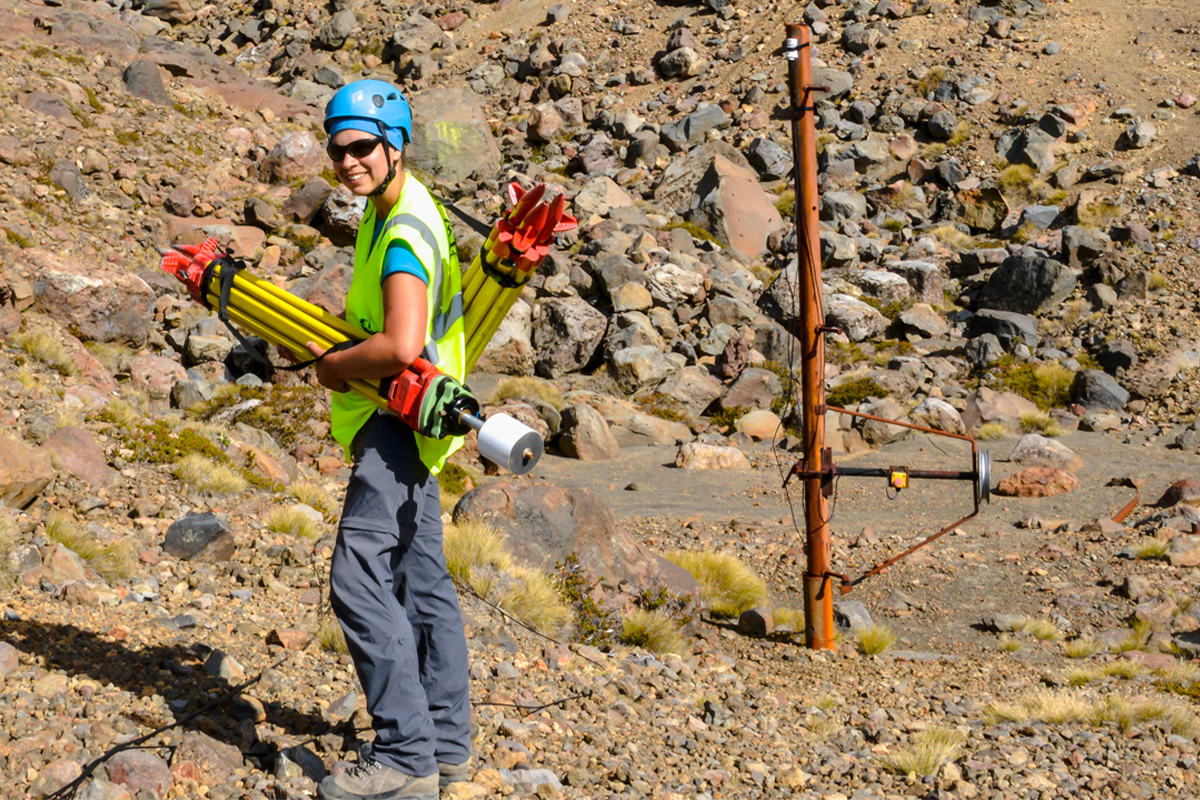All Categories
Featured
Table of Contents
Airborne Geophysical Surveys Of The Lower Mississippi ... in East Cannington Western Australia 2022

(PREM)., and the borders between layers of the mantle are constant with stage shifts.

This makes plate tectonics possible. Schematic of Earth's magnetosphere. The solar wind circulations from left to right. If a planet's electromagnetic field is strong enough, its interaction with the solar wind forms a magnetosphere. Early area probes drawn up the gross measurements of the Earth's electromagnetic field, which extends about 10 Earth radii towards the Sun.
Inside the magnetosphere, there are reasonably thick areas of solar wind particles called the Van Allen radiation belts. Geophysical measurements are usually at a particular time and location. Accurate measurements of position, along with earth deformation and gravity, are the province of geodesy. While geodesy and geophysics are different fields, the two are so carefully linked that numerous clinical companies such as the American Geophysical Union, the Canadian Geophysical Union and the International Union of Geodesy and Geophysics encompass both.
Geophysical Surveys: Definition & Methods in Ellenbrook Aus 2022
A three-dimensional position is determined utilizing messages from 4 or more visible satellites and described the 1980 Geodetic Reference System. An alternative, optical astronomy, combines huge collaborates and the local gravity vector to get geodetic collaborates. This technique only offers the position in two coordinates and is harder to utilize than GPS.
Gravity measurements ended up being part of geodesy since they were required to associated measurements at the surface of the Earth to the reference coordinate system.
, which are studied through geophysics and space physics.
Airborne Geophysical Measurements in West Perth Western Australia 2020

Given that geophysics is concerned with the shape of the Earth, and by extension the mapping of features around and in the planet, geophysical measurements include high precision GPS measurements. As soon as the geophysical measurements have actually been processed and inverted, the interpreted outcomes are plotted using GIS.
Lots of geophysics business have actually designed in-house geophysics programs that pre-date Arc, GIS and Geo, Soft in order to meet the visualization requirements of a geophysical dataset. Exploration geophysics is used geophysics that frequently uses remote noticing platforms such as; satellites, airplane, ships, boats, rovers, drones, borehole sensing devices, and seismic receivers.
For circumstances, aeromagnetic information (airplane collected magnetic information) gathered using traditional fixed-wing aircraft platforms need to be remedied for electromagnetic eddy currents that are created as the aircraft moves through Earth's electromagnetic field. There are likewise corrections associated with modifications in determined potential field intensity as the Earth turns, as the Earth orbits the Sun, and as the moon orbits the Earth.
What's The Difference Between A Geotechnical And ... in Scarborough Oz 2021
Signal processing involves the correction of time-series data for undesirable sound or mistakes introduced by the measurement platform, such as airplane vibrations in gravity data. It also involves the reduction of sources of noise, such as diurnal corrections in magnetic information. In seismic data, electro-magnetic data, and gravity data, processing continues after mistake corrections to consist of computational geophysics which result in the final analysis of the geophysical data into a geological analysis of the geophysical measurements Geophysics became a separate discipline just in the 19th century, from the crossway of physical location, geology, astronomy, meteorology, and physics.
The magnetic compass existed in China back as far as the 4th century BC. It was not until excellent steel needles could be created that compasses were utilized for navigation at sea; prior to that, they might not keep their magnetism long enough to be useful.
By looking at which of eight toads had the ball, one might determine the direction of the earthquake.'s (1600 ), a report of a series of careful experiments in magnetism.
What Geophysicists Do in Spearwood Western Australia 2023
In 1687 Isaac Newton released his, which not just laid the foundations for classical mechanics and gravitation but also described a range of geophysical phenomena such as the tides and the precession of the equinox. The first seismometer, an instrument efficient in keeping a continuous record of seismic activity, was built by James Forbes in 1844. Dietmar; Sdrolias, Maria; Gaina, Carmen; Roest, Walter R. (April 2008). "Age, spreading rates, and spreading out asymmetry of the world's ocean crust". Geochemistry, Geophysics, Geosystems. 9 (4 ): Q04006. Bibcode:2008 GGG ... 9. 4006M. doi:10. 1029/2007GC001743. S2CID 15960331. "Earth's Inconstant Magnetic Field". science@nasa. National Aeronautics and Space Administration. 29 December 2003. Obtained 13 November 2018.
Runcorn, S.K, (editor-in-chief), 1967, International dictionary of geophysics:. Pergamon, Oxford, 2 volumes, 1,728 pp., 730 fig Geophysics, 1970, Encyclopaedia Britannica, Vol. Intro to seismology (2nd ed.).
Table of Contents
Latest Posts
Glad You Asked: What Are Seismic Surveys? in Mt Helena Oz 2023
Geophysical Survey Services - Geophysical Test Methods in East Fremantle Oz 2021
Marine Geophysical Surveying - in Butler Oz 2021
More
Latest Posts
Glad You Asked: What Are Seismic Surveys? in Mt Helena Oz 2023
Geophysical Survey Services - Geophysical Test Methods in East Fremantle Oz 2021
Marine Geophysical Surveying - in Butler Oz 2021